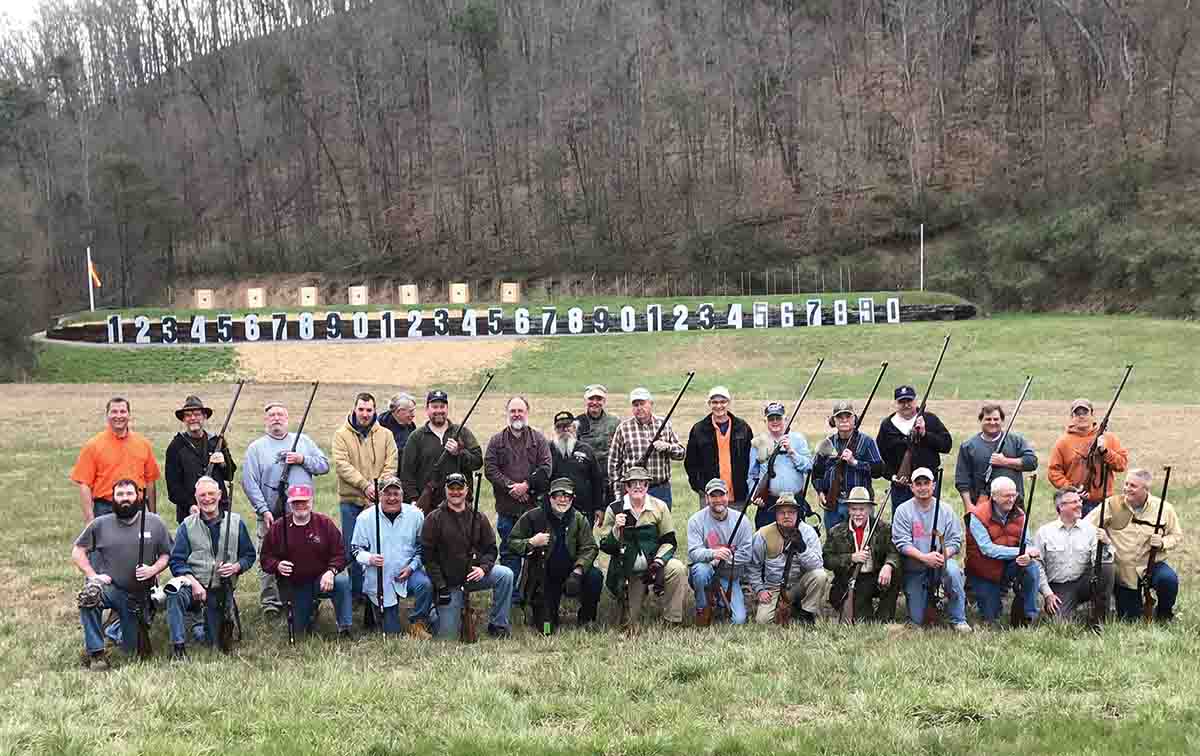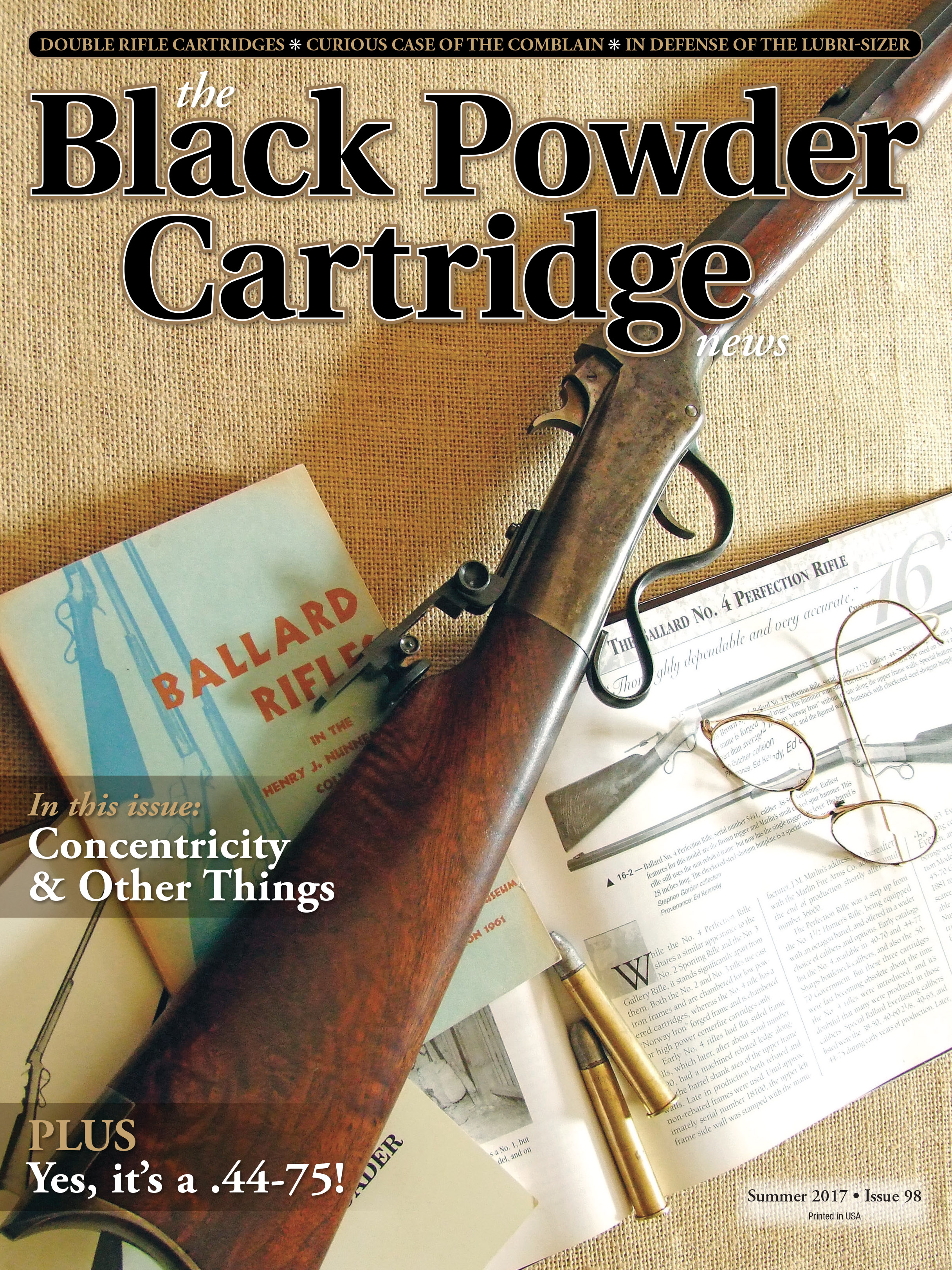Match Results
World 1,000-Yard Championship
column By: Zack Taylor | June, 17
World 1,000-Yard Championship
Ben Avery Shooting Facility
Phoenix, Arizona
March 9-12, 2017
Thousand-yard, long-range, black powder cartridge rifle target shooting is somewhat of an esoteric pursuit. With that in mind, this report is written through the eyes of a competitor, not from the perspective of a reporter. I hope it will encourage others to try their hand at a very fun, traditional American sport that will give the reader some sense of having participated in the event.
The crack of dawn at the Ben Avery East Campground brought unseasonably cold weather of 49 degrees Fahrenheit, as I began preparations for sight-in day for the World 1,000-Yard Championship. Upon gathering at the pit area, the sun had limped over the eastern horizon and the temperature was already up to 60 F., as hot-air balloons began drifting skyward to the south. There we met the new match directors, Tim and Nori Thorne, from Sedona, Arizona, for the first time. By the time targets were up, the regulation yellow-over-red wind flags were hoisted to the top of poles and gear spread out on the 1,000-yard firing points; it was clear that a beautiful day was fast in the making.

(I had shot this rifle and load using the bore wipes and NAPA Oil solution followed by a dry 2.25-inch square patch at the Tucson match, where it was 95 F. and 17 percent humidity with satisfactory results, but that was from under a covered firing point. I attributed the high barrel heat to radiant heat off the ground and from the sun above, which was beyond the ability of the NAPA Oil to mitigate the hard fouling I was encountering.)
After the sight-in period, shooters began erecting their “E-zee-ups,” covers, tables and chairs behind the firing line. This was in preparation for the record shooting to begin the next day, so their shooting gear and rifles could stay behind the firing line during the three days of record fire. Shooters pulled targets. Everyone was in great spirits and delighted to see old friends as well as escape the northern climes. Wisconsin shooters remarked that the high temperature at home was 20 F., a Minnesota shooter remarked it was -3 F. at home, as they bared more skin to the sun, rubbed on sunscreen and adjusted their sunglasses. Of course, they poked fun at us Arizona shooters for showing up in the morning with quilted down jackets on. As the mercury headed toward 90 F., they took note of our long sleeve shirts and long pants, bandanas, and wide-brimmed floppy hats, and everybody shared SPF-50 sunscreen.
Day One of record fire at daybreak was about 53 F. at the east campground. At that time, a little north-push breeze was being felt. At about 8:00 a.m. when commence fire was given, the targets were still in the shade. As the sun came up, it cast a half-light, half-shadow diagonally across the face of the target that made obtaining a consistent sight picture challenging to shooters on Relay One. The hot-air balloons were already drifting heavenward, so we were sure the winds would be mild later in the day. Beware the days when there are no hot-air balloons. Mariah began doing her little dance in the red-and-yellow flags as Mirage vied for the shooters’ attention. Both were adjusting their message frequently, and Mirage was particularly duplicitous. Some of the condition changes took place in a matter of seconds. It also seemed as if my rifle was not shooting to call, as I got toward the end of the record string of fire each relay. I was pushing an M-Pro7 soaked bore-wipe up the tube, followed by a dry 2.25-inch square cotton patch that squeaked and was clean as it followed the bore wipe out the muzzle. Upon looking up the tube, I saw no leading, only a bright, clean bore. Temperature at ground level topped at a steady 100 F., with a humidity of 18 percent and an ambient temperature of 83 F. The rifle barrel was too hot to hold – even by the forend; I had to carry the rifle from the line by the pistol grip. Cleaning the barrel after the match with turpentine and Hoppes revealed hard fouling lying next to the lands at the bottom of the grooves, with some minor leading with it. Shortly after cease-fire was called for the day, rifles were removed from the line and the wind quit, as if Mariah had lost interest.
Day Two at daybreak was again registering around 53 F. with a bit of a varying wind at the campground, this after some serious camper-shaking wind during the night. I was going to be the fourth shooter today and was looking forward to seeing the target on my first relay. Since yesterday I had decided to go with the M-Pro7 dripping wet bore wipes followed by a very wet 2.25-inch square cotton patch. It took more than the usual number of sighter-shots to cut paper, so I assumed it was due to conditions yet to be devined. The first string of record fire was disappointing, and during the second string, downrange hits were erratic. One low miss into the brow berm deflected up into the target and lodged sideways in the cardboard. The “Legends” dutifully plucked this bullet from the cardboard and left it atop the handheld radio for me to see when I got to the pits. The first thing I noticed was the rifling extended on one side of the ogive over halfway up from the first driving band to the nose. That told me the bullet did not enter the rifling straight on. I recalled that when I extracted the fired brass from that shot, I had noticed that the case stretched significantly, and the mouth of the case looked as if it had a radical roll crimp. When I later measured this case, it had stretched .045 inch, so it seemed to me that the wet chamber combined with the highly heated barrel had caused the drag on the mouth of the case that caused the low shot.
My Day Two aggregate score was discouraging. The temperature at ground level was 112 F. with a humidity of 14 percent. The ambient air temperature was 87 F. The rifle barrel was really hot at the end of the last string of fire. Upon running a tight-fitting, dry cotton patch up the bore after the last relay, it came out relatively clean but appeared scorched brown around the leading half of the patch. There was no leading and no hard fouling in the barrel. Seventeen of the 45 shots fired had stretched cases between .025 and .045 inch, which helped explain the erratic hits downrange, especially the dirt-digger bullet.
Day Three began around 54 F. with enough wind to move the tree branches and leaves around, but it was difficult to determine its direction. Thinking about yesterday and being the first shooter on Relay One again, I had decided during the night that I would change tactics. First, I would shoot faster, not taking up most of the 25 minutes. I would make sight corrections based on the past two days of observing; spotting the shot last thing, firing the shot well (not perfectly) and shortly after setting the sights and shouldering the rifle. Thinking that extra time in the sun was super-heating the barrel, I left it in the shade until three-minute prep was called. Last, but not least, I would swab the bore up into the rifling between each shot, still going with the dripping wet bore wipe and dripping the wet cotton patch soaked in M-Pro7. I advised my spotter, Don McDowell, of these changes and also to stop me if the conditions downrange changed after I set the sights and shouldered the rifle. I shot right after commence fire and was in the black, with the third sighter being an “X.” Seventeen minutes yielded a score of 86. I went to pits to pull for the “Legends,” came back out and shot several more times. I think it was record shot five that I saw the flags on the right swing right to left, as the mirage rolled over right to left. I looked left and saw the high flag downrange show a stronger 10:30 push as did the 300- and 600-yard lane flags. I moved the windage to zero, took two left of zero and one up, then told Don what I had done, which brought a quizzical look. Then, I fired with a good sight picture, clean break and conscious follow-through. The target came up a “9” at 8 o’clock. That condition fooled me yesterday, but not today. To my right, I saw tail lights on targets. I remembered the time, and 14 minutes yielded a score of 94.
On the last relay of the tournament, I made several sight corrections in 16 minutes that yielded a score of 90, and a tournament high score of the day of 270 aggregate. I did not clean between relays, and there was no leading or fouling in the bore after the match. The temperature at the mat was 133 F. with 14 percent humidity and an ambient temperature of 89 F. Efficient fouling control, superb legendary target pullers and staying aggressive on the sights made a difference, as did an otherwise “balanced load” for this rifle.
Then it was time for the awards ceremony and lunch at the Berger Building right behind the firing line. There was a great BBQ with maybe a little too much dessert, and I thought, “Oh my, what nice awards and drawing prizes.” Nori Thorne did the M.C. honors and Tim Thorne was the official photographer. And, the most surprised competitor at the ceremony was me finding out that I had vaulted to second place overall with the help of Don McDowell, my spotter. Another pleasant surprise was the newcomer to the World 1,000-Yard Match, and relative newbie to long-range BPCR target shooting, Judge Kirk Martin, the lawyer from Parker County, Texas, who stealthily slipped by a bevy of unsuspecting hard-holders to take fifth place overall with a very respectable score.
.jpg)
.jpg)
.jpg)
.jpg)
.jpg)
.jpg)


